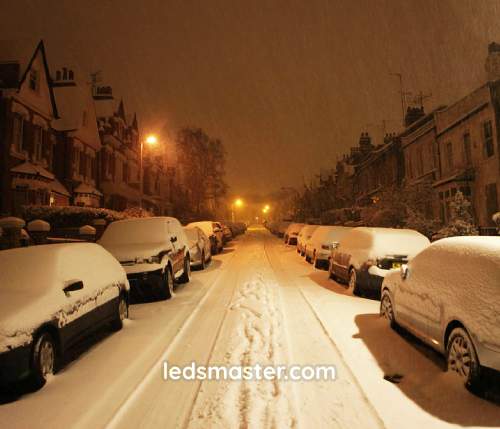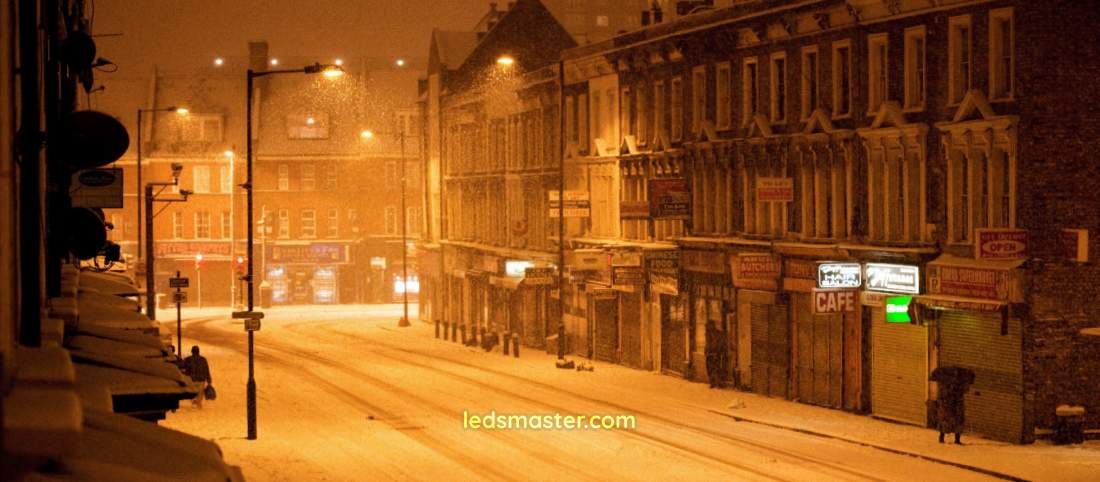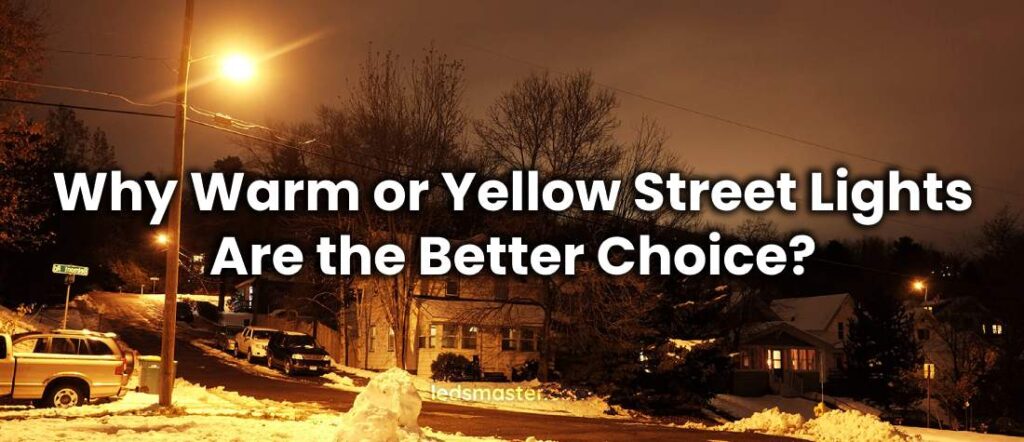Choosing the right street lighting goes beyond simply brightening the streets. It can enhance safety, support ecological balance, and even reflect cultural values. Among the various options, yellow and orange lights stand out for their practical benefits and aesthetic appeal. These warm hues not only improve visibility through fog and reduce glare but also foster a more inviting and secure atmosphere. As cities seek smarter and more sustainable lighting solutions, the advantages of yellow and orange lights are becoming increasingly clear.
Table of Contents
ToggleBetter Transmission and Penetration Through Fog
Yellow light has been shown to penetrate fog more effectively than white or cool light. This superior transmission improves visibility for drivers and pedestrians, significantly enhancing safety. Fog can obscure the road and reduce reaction times, making it critical for street lighting to cut through these conditions and provide clear illumination.
Additionally, urban sky glow, a form of light pollution, is less pronounced with lights that have lower penetration abilities. Reduced light pollution benefits astronomical research, as it allows for clearer observations of star movements and other celestial phenomena. By minimizing sky glow, yellow street lights not only enhance public safety but also support scientific endeavors and environmental conservation.

Less Physical Impact on People
Recent research indicates that blue light suppresses the secretion of melatonin, a hormone critical for maintaining our internal clock and regulating emotions and reproductive health. Melatonin also plays a vital role in our immune system, aiding in the body’s defense mechanisms. Given these findings, many countries prefer yellow or amber street lamps for residential areas to eliminate blue light exposure.
By minimizing blue light, these lights help maintain healthier circadian rhythms, promoting better sleep and overall well-being. Exposure to blue light, especially during nighttime, can disrupt sleep patterns and lead to a range of health issues, including insomnia and mood disorders. Yellow and amber lights provide a more harmonious lighting solution that aligns better with our natural biological processes.
Less Impact on the Ecosystem
Introducing street lights that mimic daylight in rural areas can disrupt the metabolism cycles of plants and animals, particularly nocturnal species. Bright white light interferes with their perception of day and night, affecting their natural behaviors such as hunting and migrating. This disruption can lead to significant ecological imbalances, altering food chains and habitat utilization.
For instance, sea turtles are more sensitive to white light and can be attracted to it, leading to fatal interactions with roads and vehicles. This sensitivity to artificial lighting can cause disorientation during their crucial nesting and hatching processes. To mitigate these risks, some countries, like the United States, mandate the use of turtle-friendly yellow street lights in areas where sea turtles are prevalent. This approach helps protect wildlife by reducing the impact of artificial lighting on their natural habitats.
Enhanced Visibility and Reduced Glare
 Yellow or orange lights improve visibility while reducing glare, which is crucial for night-time navigation. Human eyes are more sensitive to yellow and green wavelengths, making it easier to see under warm light conditions. This enhanced visibility is particularly beneficial for older drivers and pedestrians, who may struggle with night vision. Additionally, yellow light reduces the scattering effect caused by atmospheric particles, such as fog or rain, which can exacerbate glare and decrease visibility. This makes yellow or orange street lights more effective in providing clear, focused illumination, enhancing safety for both drivers and pedestrians.
Yellow or orange lights improve visibility while reducing glare, which is crucial for night-time navigation. Human eyes are more sensitive to yellow and green wavelengths, making it easier to see under warm light conditions. This enhanced visibility is particularly beneficial for older drivers and pedestrians, who may struggle with night vision. Additionally, yellow light reduces the scattering effect caused by atmospheric particles, such as fog or rain, which can exacerbate glare and decrease visibility. This makes yellow or orange street lights more effective in providing clear, focused illumination, enhancing safety for both drivers and pedestrians.
Moreover, the reduction in glare is vital for reducing eye strain and fatigue. Drivers are less likely to be dazzled by oncoming lights or reflections from wet road surfaces, contributing to a safer driving environment. Pedestrians also benefit from the softer, more diffuse light, which makes it easier to discern obstacles and navigate pathways confidently.
Energy Efficiency and Cost-Effectiveness
While high-pressure sodium (HPS) lamps have historically been used for their efficiency and long lifespan, modern advancements in LED technology offer even greater benefits. LEDs are available in various color temperatures, including warm options that replicate the advantages of yellow or orange hues. Warm-colored LED street lights combine energy efficiency with the safety and visibility benefits of traditional warm lights. They consume less power, have longer lifespans, and reduce maintenance costs, making them a cost-effective and sustainable choice for urban lighting.
LEDs also provide the flexibility to adjust brightness levels and color temperatures, allowing cities to optimize lighting for different conditions and times of day. This adaptability contributes to significant energy savings and operational efficiencies. Additionally, the durability and lower heat emission of LEDs result in fewer replacements and less frequent maintenance, reducing the environmental impact and overall costs associated with street lighting systems.
Aesthetic and Psychological Benefits
Street lighting also influences the ambiance and aesthetic appeal of urban environments. Warm or yellow lights create a welcoming and comfortable atmosphere, fostering a sense of security and well-being. This psychological effect is particularly important in residential neighborhoods, parks, and public spaces where people gather and socialize. The warm tones of yellow and orange lights evoke a feeling of warmth and safety, encouraging outdoor activities and community interactions.
Cooler, bluish lights, on the other hand, can create a harsh and sterile environment, which may be perceived as less inviting. The warm glow of yellow or orange lights enhances the visual appeal of streetscapes, making them more pleasant and conducive to community activities. This aesthetic quality not only improves the experience for residents and visitors but also supports local businesses by creating an attractive and lively atmosphere.

Historical and Cultural Preferences
In many cultures, yellow and orange lights are traditionally associated with warmth, safety, and comfort. This historical and cultural preference influences the choice of street lighting colors. The warm hues are perceived as more inviting and safer, encouraging community activities and enhancing the overall sense of security in urban environments.
For instance, traditional street lamps in many European cities have long used yellow lighting, which not only creates a nostalgic and charming ambiance but also aligns with public perceptions of safety and hospitality. In Asia, lanterns and street lights often emit a warm glow, reflecting cultural values that prioritize comfort and communal well-being. These cultural aspects reinforce the practical advantages of yellow and orange street lights, making them a popular choice worldwide.
The use of warm-colored lights can also contribute to a city’s identity and aesthetic appeal, creating a cohesive and attractive streetscape that resonates with both residents and visitors. By aligning street lighting choices with cultural and historical preferences, cities can foster a sense of continuity and heritage, enhancing the urban experience and promoting civic pride.
Conclusion
Yellow and orange street lights offer significant advantages, including improved visibility through fog, reduced glare, and better safety for drivers and pedestrians. They also minimize blue light exposure, supporting healthier sleep patterns and ecological balance by lessening disruptions to insects and wildlife. Modern LED technology further enhances their energy efficiency and cost-effectiveness. Additionally, these warm lights create a welcoming atmosphere and reflect cultural preferences, enhancing both community well-being and urban aesthetics. Overall, yellow and orange street lights provide a balanced solution that benefits public safety, health, and environmental sustainability.

